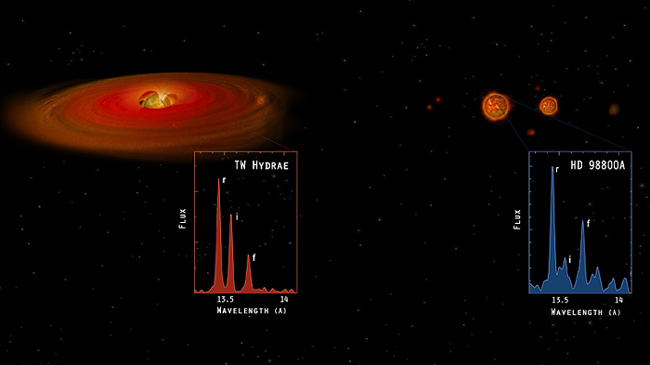TW Hydrae (left) and HD 98800A (right): An artist's conception and Chandra spectra of two young star systems in the TW Hydrae Association about 180 light years from Earth.
Caption: The X-ray spectrum of TW Hydrae (inset) provides strong evidence that matter is accreting onto the star from a circumstellar disk. X-rays are produced as matter from the disk is guided by the star's magnetic field onto one or more hot spots on the surface of the star. In contrast, the spectrum of the binary star system HD 98800A (inset) revealed that its brightest star is producing X-rays much as the Sun does, from a hot upper atmosphere or corona. This indicates that any disk around these stars has been greatly diminished or destroyed in ten million years, perhaps by the ongoing formation of planets or by its companion stars.
Chandra X-ray
Observatory ACIS/HETGS spectra Image
|


